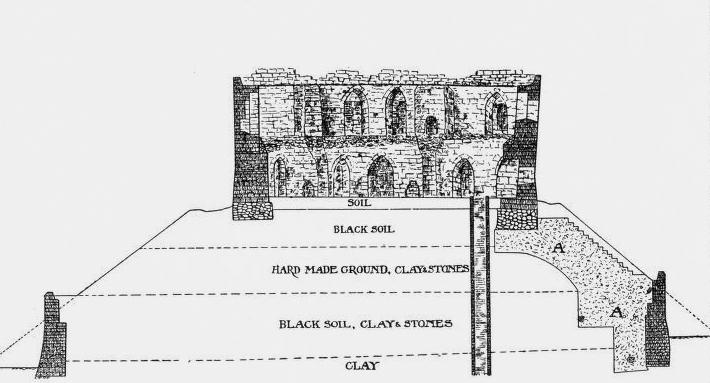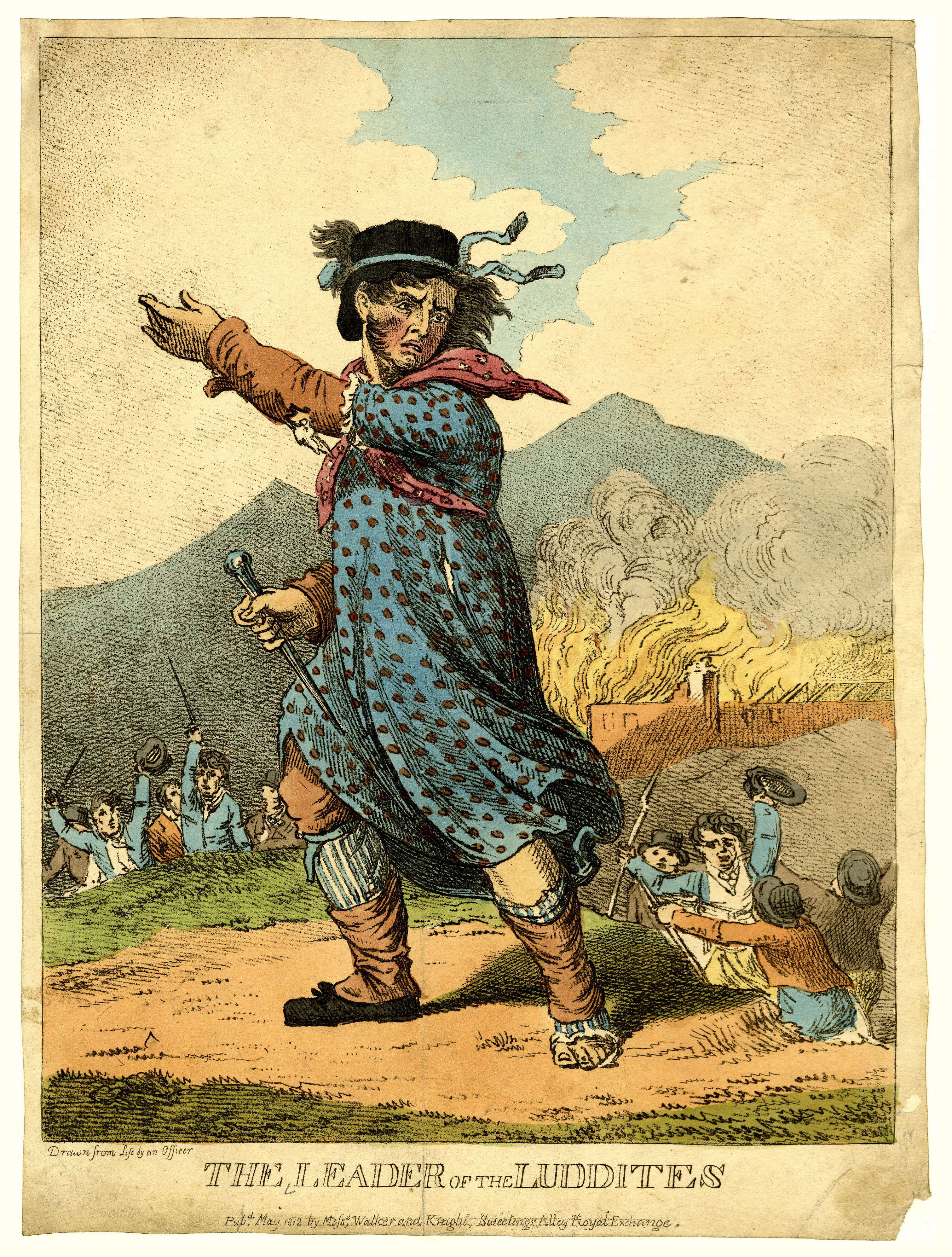|
Alice Mann (printer)
Alice Mann (''née'' Burnett; 1791–1865) was a Leeds-born radical and publisher. Her husband was arrested on suspicion of involvement in an armed uprising and she served a week long and a six month sentence for selling newspapers without paying the required tax. Biography Alice Burnett was born in Hunslet Lane, Leeds in 1791. In 1807, at the age of 16, she married James Mann, a prominent West Riding political activist and bookseller. James and Alice's book shop in Briggate appeared "to be the head quarters of sedition in this town" according to the ''Leeds Intelligencer''. James Mann died of cholera on 4 August 1832, leaving Alice widowed with nine children. She continued to sell books and added printing to the business. In 1833 she published an edition of ''Catechism of the Society for Promoting National Regeneration'' which aspired "to remove ... the social and commercial evils now existing". She also published work by the agitator Richard Carlile, the radical Richard Oas ... [...More Info...] [...Related Items...] OR: [Wikipedia] [Google] [Baidu] |
Leeds
Leeds () is a city and the administrative centre of the City of Leeds district in West Yorkshire, England. It is built around the River Aire and is in the eastern foothills of the Pennines. It is also the third-largest settlement (by population) in England, after London and Birmingham. The city was a small manorial borough in the 13th century and a market town in the 16th century. It expanded by becoming a major production centre, including of carbonated water where it was invented in the 1760s, and trading centre (mainly with wool) for the 17th and 18th centuries. It was a major mill town during the Industrial Revolution. It was also known for its flax industry, iron foundries, engineering and printing, as well as shopping, with several surviving Victorian era arcades, such as Kirkgate Market. City status was awarded in 1893, a populous urban centre formed in the following century which absorbed surrounding villages and overtook the nearby York population. It is locate ... [...More Info...] [...Related Items...] OR: [Wikipedia] [Google] [Baidu] |
York Castle
York Castle is a fortified complex in the city of York, England. It consists of a sequence of castles, prisons, law courts and other buildings, which were built over the last nine centuries on the south side of the River Foss. The now-ruined keep of the medieval Norman castle is commonly referred to as Clifford's Tower. Built originally on the orders of William I to dominate the former Viking city of Jórvík, the castle suffered a tumultuous early history before developing into a major fortification with extensive water defences. After a major explosion in 1684 rendered the remaining military defences uninhabitable, York Castle continued to be used as a jail and prison until 1929. The first motte and bailey castle on the site was built in 1068 following the Norman conquest of York. After the destruction of the castle by rebels and a Viking army in 1069, York Castle was rebuilt and reinforced with extensive water defences, including a moat and an artificial lake. York Castle f ... [...More Info...] [...Related Items...] OR: [Wikipedia] [Google] [Baidu] |
People From Leeds
A person ( : people) is a being that has certain capacities or attributes such as reason, morality, consciousness or self-consciousness, and being a part of a culturally established form of social relations such as kinship, ownership of property, or legal responsibility. The defining features of personhood and, consequently, what makes a person count as a person, differ widely among cultures and contexts. In addition to the question of personhood, of what makes a being count as a person to begin with, there are further questions about personal identity and self: both about what makes any particular person that particular person instead of another, and about what makes a person at one time the same person as they were or will be at another time despite any intervening changes. The plural form "people" is often used to refer to an entire nation or ethnic group (as in "a people"), and this was the original meaning of the word; it subsequently acquired its use as a plural form of per ... [...More Info...] [...Related Items...] OR: [Wikipedia] [Google] [Baidu] |
19th-century Printers
The 19th (nineteenth) century began on 1 January 1801 ( MDCCCI), and ended on 31 December 1900 ( MCM). The 19th century was the ninth century of the 2nd millennium. The 19th century was characterized by vast social upheaval. Slavery was abolished in much of Europe and the Americas. The First Industrial Revolution, though it began in the late 18th century, expanding beyond its British homeland for the first time during this century, particularly remaking the economies and societies of the Low Countries, the Rhineland, Northern Italy, and the Northeastern United States. A few decades later, the Second Industrial Revolution led to ever more massive urbanization and much higher levels of productivity, profit, and prosperity, a pattern that continued into the 20th century. The Islamic gunpowder empires fell into decline and European imperialism brought much of South Asia, Southeast Asia, and almost all of Africa under colonial rule. It was also marked by the collapse of the la ... [...More Info...] [...Related Items...] OR: [Wikipedia] [Google] [Baidu] |
Women Printers
A woman is an adult female human. Prior to adulthood, a female human is referred to as a girl (a female child or adolescent). The plural ''women'' is sometimes used in certain phrases such as "women's rights" to denote female humans regardless of age. Typically, women inherit a pair of X chromosomes, one from each parent, and are capable of pregnancy and giving birth from puberty until menopause. More generally, sex differentiation of the female fetus is governed by the lack of a present, or functioning, SRY-gene on either one of the respective sex chromosomes. Female anatomy is distinguished from male anatomy by the female reproductive system, which includes the ovaries, fallopian tubes, uterus, vagina, and vulva. A fully developed woman generally has a wider pelvis, broader hips, and larger breasts than an adult man. Women have significantly less facial and other body hair, have a higher body fat composition, and are on average shorter and less muscular than men. Throug ... [...More Info...] [...Related Items...] OR: [Wikipedia] [Google] [Baidu] |
1865 Deaths
Events January–March * January 4 – The New York Stock Exchange opens its first permanent headquarters at 10-12 Broad near Wall Street, in New York City. * January 13 – American Civil War : Second Battle of Fort Fisher: United States forces launch a major amphibious assault against the last seaport held by the Confederates, Fort Fisher, North Carolina. * January 15 – American Civil War: United States forces capture Fort Fisher. * January 31 ** The Thirteenth Amendment to the United States Constitution (conditional prohibition of slavery and involuntary servitude) passes narrowly, in the House of Representatives. ** American Civil War: Confederate General Robert E. Lee becomes general-in-chief. * February ** American Civil War: Columbia, South Carolina burns, as Confederate forces flee from advancing Union forces. * February 3 – American Civil War : Hampton Roads Conference: Union and Confederate leaders discuss peace terms. * February 8 & ... [...More Info...] [...Related Items...] OR: [Wikipedia] [Google] [Baidu] |
1791 Births
Events January–March * January 1 – Austrian composer Joseph Haydn arrives in England, to perform a series of concerts. * January 2 – Northwest Indian War: Big Bottom Massacre – The war begins in the Ohio Country, with this massacre. * January 12 – Holy Roman troops reenter Liège, heralding the end of the Liège Revolution, and the restoration of its Prince-Bishops. * January 25 – The British Parliament passes the Constitutional Act 1791, splitting the old province of Quebec into Upper and Lower Canada. * February 8 – The Bank of the United States, based in Philadelphia, is incorporated by the federal government with a 20-year charter and started with $10,000,000 capital.''Harper's Encyclopaedia of United States History from 458 A. D. to 1909'', ed. by Benson John Lossing and, Woodrow Wilson (Harper & Brothers, 1910) p169 * February 21 – The United States opens diplomatic relations with Portugal. * March 2 – Fr ... [...More Info...] [...Related Items...] OR: [Wikipedia] [Google] [Baidu] |
Chartism
Chartism was a working-class movement for political reform in the United Kingdom that erupted from 1838 to 1857 and was strongest in 1839, 1842 and 1848. It took its name from the People's Charter of 1838 and was a national protest movement, with particular strongholds of support in Northern England, the East Midlands, the Staffordshire Potteries, the Black Country, and the South Wales Valleys. The movement was fiercely opposed by government authorities who finally suppressed it. Support for the movement was at its highest when petitions signed by millions of working people were presented to the House of Commons. The strategy employed was to use the scale of support which these petitions and the accompanying mass meetings demonstrated to put pressure on politicians to concede manhood suffrage. Chartism thus relied on constitutional methods to secure its aims, though some became involved in insurrectionary activities, notably in South Wales and in Yorkshire. The People's Chart ... [...More Info...] [...Related Items...] OR: [Wikipedia] [Google] [Baidu] |
Luddite
The Luddites were a secret oath-based organisation of English textile workers in the 19th century who formed a radical faction which destroyed textile machinery. The group is believed to have taken its name from Ned Ludd, a legendary weaver supposedly from Anstey, near Leicester. They protested against manufacturers who used machines in what they called "a fraudulent and deceitful manner" to get around standard labour practices. Luddites feared that the time spent learning the skills of their craft would go to waste, as machines would replace their role in the industry. Many Luddites were owners of workshops that had closed because factories could sell the same products for less. But when workshop owners set out to find a job at a factory, it was very hard to find one because producing things in factories required fewer workers than producing those same things in a workshop. This left many people unemployed and angry. The Luddite movement began in Nottingham in England and cu ... [...More Info...] [...Related Items...] OR: [Wikipedia] [Google] [Baidu] |
William Strange (radical)
William Strange may refer to: *William Strange, who gave name to Strange Creek, West Virginia * William Alder Strange (1813–1874), English headmaster and author *Billy Strange (William Everett Strange, 1930–2012), American musician and actor *William Strange (priest) (born 1953), Anglican clergyman *William Heath Strange, founded the Hampstead General Hospital See also *Frederick William Strange (1844–1897), English-born Canadian physician and politician * Maxwell W. Strange (Maxwell William Strange, 1820–1880), Canadian politician *Wayde Preston Wayde Preston (born William Erksine Strange; September 10, 1929 – February 6, 1992) was an American actor cast from 1957 to 1960 in the lead role in 67 episodes of the American Broadcasting Company, ABC/Warner Bros. Western (genre), Western ... (William Erksine Strange, 1929–1992), American actor * William Strang (other) {{hndis, Strange, William ... [...More Info...] [...Related Items...] OR: [Wikipedia] [Google] [Baidu] |

.jpg)

_1938.jpg)

.jpg)



